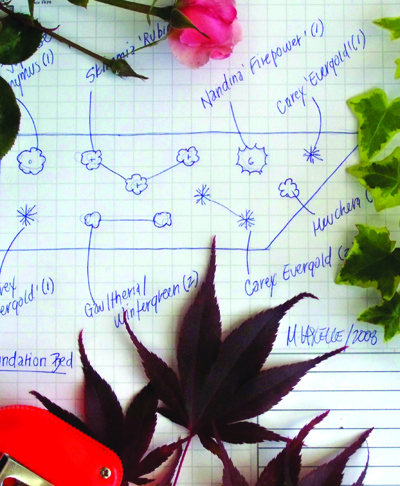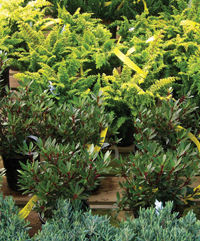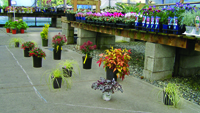
Have you ever asked yourself what it is that your customers really want
when they come to shop at your nursery or garden centre? If you thought
that it might be quality plant stock, good customer service or a
comprehensive product selection you would be wrong.
How to build your customers the ideal garden
 |
| Mapping out your design makes it easier for the client to envision the garden. Advertisement
|
Have you ever asked yourself what it is that your customers really want when they come to shop at your nursery or garden centre? If you thought that it might be quality plant stock, good customer service or a comprehensive product selection you would be wrong. While these are all contributing factors towards what they hope to attain, what your customers really want is a garden to be proud of. It may sound like a simple goal, but achieving that idealistic landscape can be quite difficult given all the possible variables in place, such as on-site conditions (drainage, soiltype, sun exposure, available space), plant maintenance or ongoing care, and last but not least, your client’s personal taste – which may not lend itself to an aesthetically pleasing landscape.
Creating a no-charge, in-house garden design service is a great way to bridge the gap between your customer’s desires and your sales potential. The most important component of this type of service is the staff that provides the advice – as they need to be very knowledgeable plant people, preferably with some background in landscaping. Besides this you need very little else but the plant stock you already have, a design sketch pad of some sorts, a measuring tape and some chalk.
To give you some idea of how this process should work, I will describe the stages of a typical session; I generally start an in-house design by having the customer describe the site (often with the aid of digital camera images or a sketch) and explain why they want to landscape this particular area (for example, screening view of neighbour). Then I ask them a short series of questions (see sidebar) in order to determine their needs, preferences and any possible site limitations. After all these inputs, I literally show the client a limited selection of suitable plants and then ask them to choose a few favourites. Having those plants on hand also plays a critical role as it is counterproductive to suggest something not in stock. Most customers would rather make the purchase right away all at once, instead of making another trip to pick up a special order.
 |
|
| Always have a good selection of plants on hand when offering in-house design. | |
 |
|
| A sample foundation bed design laid out in an aisle.
|
If we are designing a bed or border, I generally chalk the outline on one of our empty drives or walkways, and then I start to create the layout using the plants we have chosen. I do this because physically seeing the final result, makes it easier for the client to envision the garden and much easier for you to make the sale. Once the bed is laid out, I ask the customer if they would like to make any changes and together we fine-tune the sample garden to their taste. It is important for designers not to impose their preferences onto the design and to be sure that the client is comfortable with the plant selection. After we have final approval, I make a simple sketch of the landscape on a prefabricated design pad (with the nursery’s logo) for the customer to bring home. Often the client will also take some digital camera shots of the sample layout for future reference at this time. The last step is simply asking the customer which plants they would like to purchase that day. In my experience, once this free service has been offered and accepted, you generally end up selling all of the plants at once. If it is a large purchase with total cost being a potential hindrance, then offering a volume price discount of 10-20 per cent would be appropriate. You should never underestimate the importance of this personal gesture and marketing tool, because by offering a small discount, you can dramatically increase your volume sales.
An effective in-house design service will literally sell itself because when your client’s friends or neighbours see the beautiful garden they have installed with your advice and plants they usually end up wanting that same level of service for themselves.
| Asking the Right Questions
In order for an in-house design service to be as cost effective as possible (in terms of time inputs versus plant sales) it is important to get all the relevant information in a concise manner. Politely getting to the point and asking some key questions saves both you and the client valuable time. Here is a simple set of questions that have served me well during my years of helping others design their garden. How much sun does this area receive and at what time(s)? Do you know what type of soil you have? Would you describe it as sandy, clay, rocky, poorly drained or root-bound? Are there any plants (or flower colours) that you do or don’t want in the garden? What would be an ideal ultimate size for the plants we chose for |
Print this page